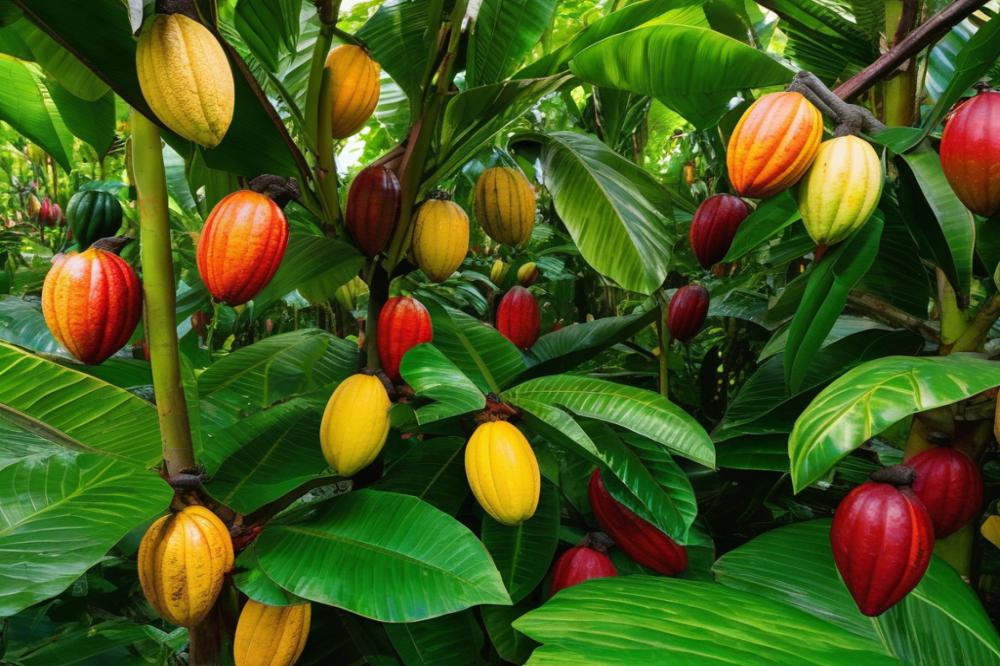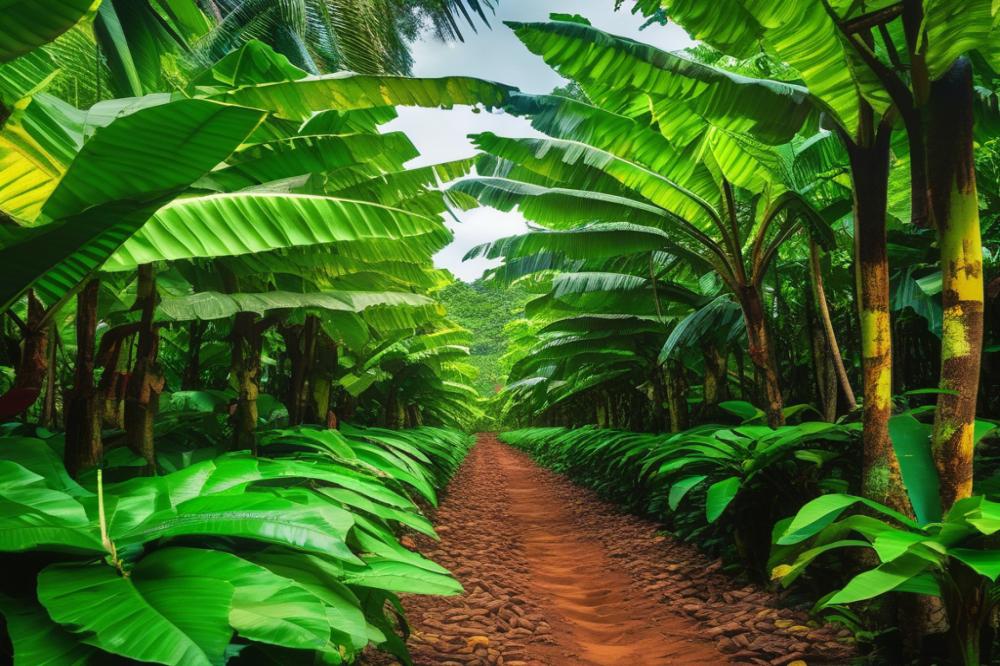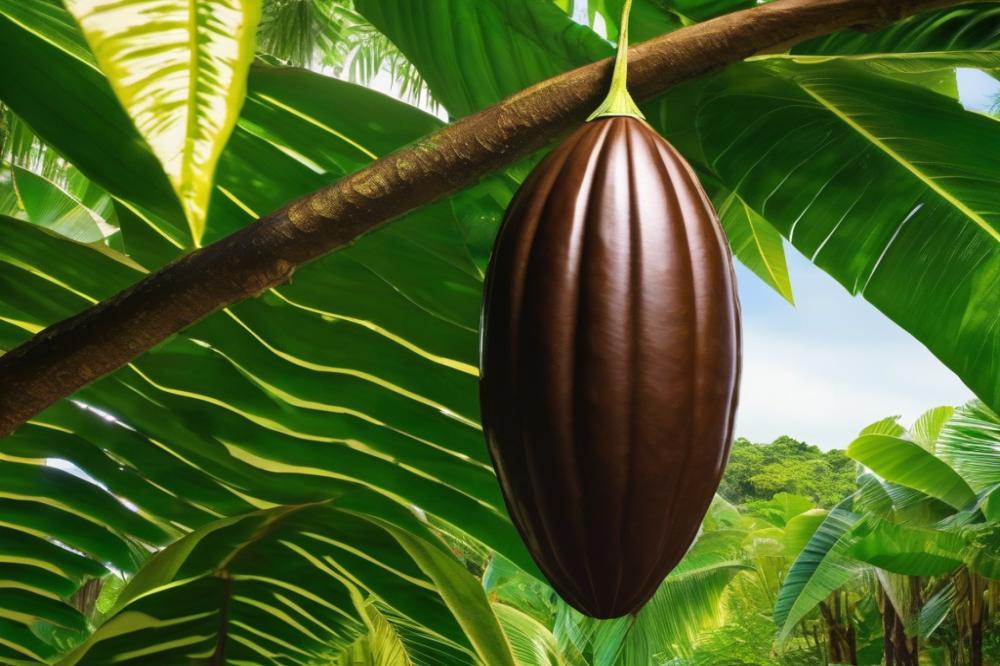Introduction
Cocoa is more than just a popular ingredient in sweets and snacks; it is an essential part of many economies around the world. This tropical crop thrives under specific conditions that significantly influence its quality and yield. Cocoa cultivation requires careful attention to various factors, especially Climate.
Understanding the ideal Climate for cocoa growth is crucial for farmers and producers. The success of growing cocoa trees hinges on specific heat and humidity levels. Factors such as rainfall, temperature, and even soil types can make or break a harvest. For regions focused on sustainable farming, this knowledge is vital for both environmental health and economic stability.
Various geographical regions around the globe are dedicated to cocoa production. However, not all areas possess the same ability to nurture these delicate trees. Learning about the requirements can help enhance cocoa cultivation practices. With proper care and understanding of climate, farmers can optimize their harvests and contribute to a global demand that continues to rise.
The Cocoa plant and Its Requirements

Cocoa trees belong to the genus Theobroma, which translates to “food of the gods.” These remarkable plants can grow as tall as 15 to 25 feet and sport large, glossy leaves that are bright green. The trees produce fruit called pods, which can contain up to 40 seeds, otherwise known as beans. Each pod can be transformed into the delicious chocolate we love.
Ideal Climate Conditions
When it comes to cocoa cultivation, certain climate conditions hold great importance. The ideal temperature for growing these trees typically ranges from 20 to 30 degrees Celsius. Regions near the equator provide the perfect environment, ensuring stable warmth year-round. Additionally, sunlight plays a vital role; cocoa trees thrive in areas with filtered sunlight, such as beneath taller trees in a forest.
Tropical Climate’s Role
Tropical climates are paramount for cocoa growth. These environments offer a balance of warmth and moisture. Most geographical regions that cultivate cocoa experience little temperature variation throughout the year. Such consistency allows these trees to produce fruit consistently, contributing to global cocoa production.
Humidity and Rainfall Influence
High humidity levels are crucial for the healthy development of cocoa trees. Ideally, moisture in the air should be around 70% to 90%. This humid atmosphere helps the plants to thrive and fight off diseases. Rainfall also plays a key role in sustaining cocoa cultivation. The trees require between 1,200 to 2,500 millimeters of rainfall annually, spread evenly throughout the year. Inadequate water can stunt growth or lessen yield.
Importance of Soil Types
Soil composition is equally important in growing healthy cocoa trees. Well-drained, fertile soils rich in organic matter are ideal. Suitable soil types may include loamy or sandy soils, which facilitate proper drainage while retaining essential nutrients. Farmers often engage in sustainable farming practices to maintain soil health and enhance production.
Geographical Regions of Cocoa Production
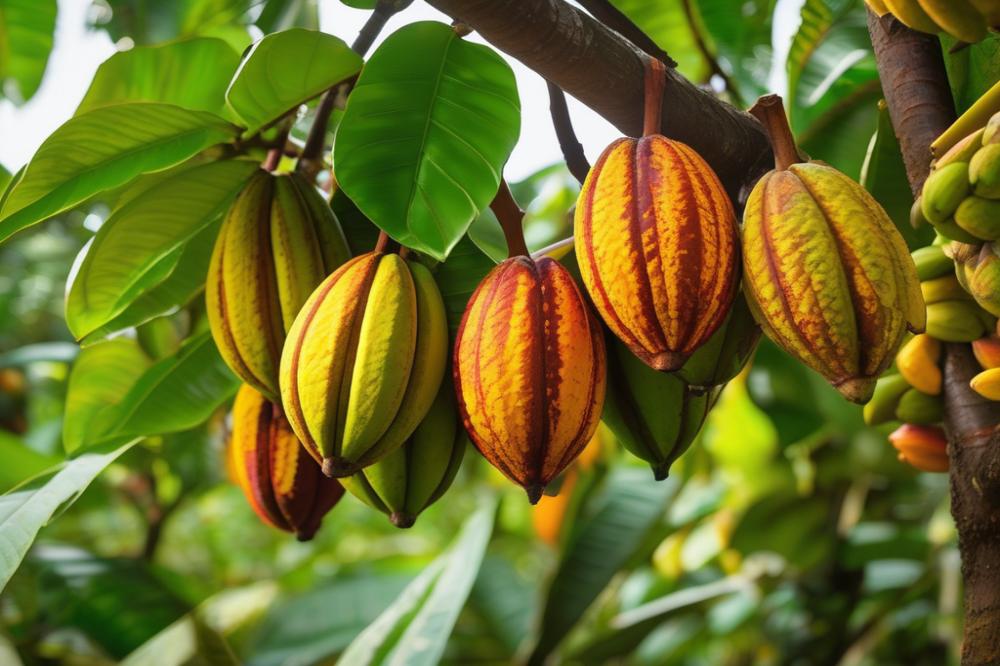
The production of cocoa takes place across several major continents. It thrives in nations located near the equator, where a hot, humid tropical climate prevails. This plant is sensitive, requiring specific growing conditions to flourish. Rainfall and proper soil types are crucial factors in its growth.
Discussion of Cocoa-Growing Regions in West Africa
West Africa stands out as a leading region for cocoa production. Countries like Côte d’Ivoire, Ghana, and Nigeria dominate the market. These nations benefit from abundant rainfall and rich soils. Farmers in West Africa often use traditional practices for cultivation. Increasingly, there is a focus on sustainable farming methods to combat environmental concerns. This shift supports local economies while maintaining viable ecosystems.
Overview of Cocoa Cultivation in South America and Southeast Asia
South America is home to a smaller but significant cocoa industry. Ecuador, for example, is known for its high-quality beans. The country’s diverse climates contribute to the unique flavor profiles of its product. In contrast, Southeast Asia contributes to the global supply as well. Countries such as Indonesia and Malaysia have been expanding their cocoa cultivation in recent years. They benefit from favorable weather and fertile lands, although production levels remain lower than those of West Africa.
Comparison of Cocoa Production Levels in Different Geographical Areas
Understanding production levels across various regions highlights great disparities. West Africa leads by a large margin, producing over 70% of the world’s cocoa. South America and Southeast Asia account for smaller shares, with South America producing around 15%. Southeast Asia’s contributions are even less, comprising about 5-10% of global output. The different yields show how climate and agricultural practices directly impact farming success. Each region faces challenges, but advancements in sustainable farming could change the landscape in the future.
Soil Types and Cocoa Cultivation
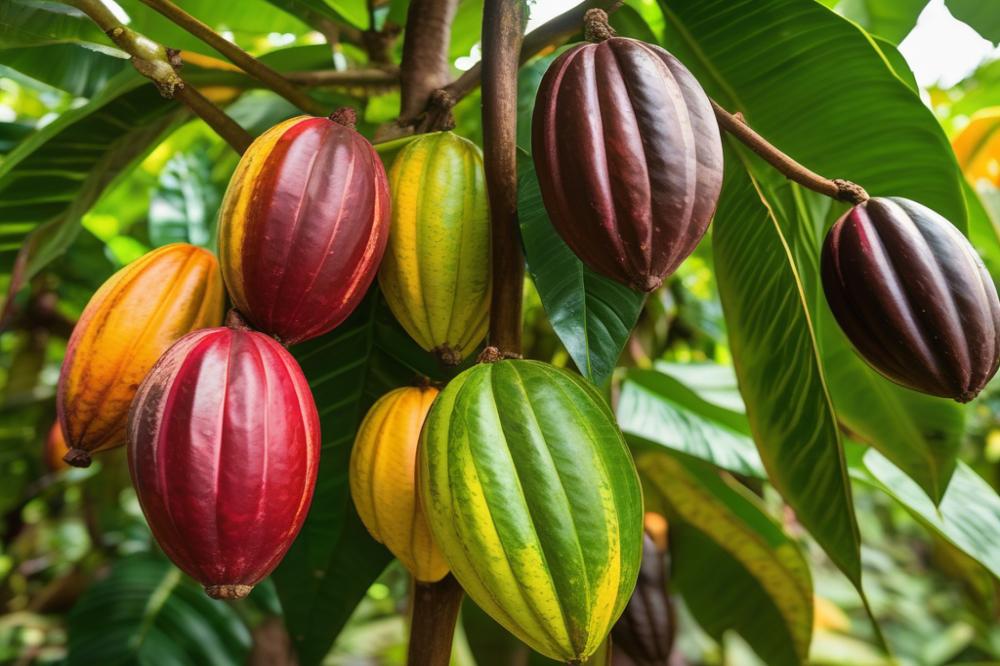
The relationship between soil types and cocoa growth is significant. Different soils provide varying levels of nutrients and support for cocoa trees. The right soil can make a big difference in a farm’s yield. Farmers aiming for high cocoa production need to pay close attention to what lies beneath the surface. Tropical climates often see fertile soils, but not all land is ideal for cultivation.
Loamy soils are often considered the best for cocoa cultivation. These soils retain moisture well and offer a balanced nutrient profile. High fertility contributes to robust tree growth and better bean quality. Sandy soils, on the other hand, drain quickly and can lead to water stress. Conversely, clay soils may hold too much water, fostering root rot. It is clear that soil characteristics directly impact growth and overall yield.
Soil health is crucial for sustainable farming practices. Healthy soil promotes biodiversity and helps prevent disease in cocoa trees. Farmers who focus on improving soil quality can boost their long-term productivity. Practices like crop rotation, cover cropping, and organic matter addition are essential for maintaining soil health. As the world demands more cocoa, the need for sustainable methods becomes increasingly important.
Regions where cocoa is grown vary widely. However, consistently healthy soils contribute significantly to the success of the farms in those geographical areas. Humidity and rainfall are also key factors that work in tandem with soil health. Farmers should be aware of their local conditions while selecting the best soil types for plant growth. The choices they make today will influence cocoa cultivation for years to come.
In conclusion, understanding the relationship between soil types and cocoa trees enhances agricultural practices. Emphasizing soil health leads to better farming outcomes and environmental sustainability. Moving towards practices that prioritize soil vitality fosters resilient cocoa crops. These steps collectively pave the way for a more prosperous future, ensuring that cocoa can thrive while meeting global demand.
Sustainable Farming Practices in Cocoa Production
Farming methods that focus on sustainability have become increasingly important in the world of chocolate. Practices that promote environmental health and economic viability are key to the future of crop production. Techniques such as intercropping enhance soil fertility and reduce pests naturally. Farmers often plant various crops alongside cocoa trees to prevent issues linked to monoculture. These approaches help improve biodiversity in geographical regions where cocoa is cultivated.
Climate change poses significant challenges to cocoa growth. Rising temperatures and erratic rainfall patterns can severely affect the health of cocoa trees. Increased humidity can lead to the spread of diseases, jeopardizing production levels. As the climate continues to evolve, it is essential for farmers to adapt to these changes to maintain sustainable practices. Adapting to these new conditions often involves using specific soil types that are rich in nutrients and resistant to drought.
Community involvement plays a vital role in ethical farming practices. When local populations participate in decisions, cocoa cultivation benefits from traditional knowledge and sustainable techniques. Building strong relationships among farmers, suppliers, and consumers fosters a sense of responsibility towards the environment. Support for fair wages and improved working conditions enhances the lives of those involved in cocoa farming. This allows for better sustainability throughout the entire supply chain.
Maintaining a balance between production and ecological health is crucial. Sustainable farming helps to minimize negative impacts on the environment. Approaches that protect ecosystems should be prioritized as pressures from climate change and economic demands increase. Farmers must recognize their role in this larger issue and work to create harmony between their practices and the planet.
Challenges in Cocoa Growth and Cultivation
Cocoa farmers face many challenges that can make cultivation difficult. One major issue is pests. Various insects and animals can harm young plants, leading to reduced yields. In addition, diseases such as fungal infections threaten the health of cocoa trees. These problems make it hard for farmers to maintain healthy crops.
Environmental factors also play a crucial role in cocoa cultivation. The ideal tropical climate requires specific conditions, including warm temperatures and plenty of rainfall. High humidity levels are important, as they promote rapid growth. However, climate change is altering weather patterns, causing droughts in some areas and flooding in others. These unpredictable conditions disrupt farmers’ planning and affect cocoa production.
The soil types where cocoa thrives are another concern. Rich, well-drained soil typically supports healthy trees. Unfortunately, soil degradation is common in some regions. Over-farming and deforestation can lead to nutrient loss. This affects the growth potential of cocoa trees and the sustainability of farming practices.
Farmers must also contend with socio-economic challenges. Many cocoa-producing regions are in developing countries. Limited access to resources and financial support can hamper their ability to invest in proper pest control and disease management. Without the right tools, farmers struggle to improve their harvests.
In summary, the journey from farm to table is fraught with obstacles. Understanding these challenges is crucial for improving the overall health of the cocoa industry. By addressing pest management, environmental conditions, and socio-economic factors, the path to sustainable cocoa cultivation might become clearer.
Final Thoughts on Cocoa Cultivation
In summary, the ideal climate for cocoa growth is hot and humid. Regions near the equator, with consistent rainfall, are perfect for this crop. Temperatures between 20°C and 32°C create optimal conditions. The shade from larger trees also plays a vital role in supporting healthy growth. These environmental factors together help yield high-quality beans.
Sustainability is crucial in cocoa production. Many farmers face challenges that threaten the environment. Deforestation and poor farming practices can harm local ecosystems. By adopting sustainable methods, we can reduce these risks. Organic farming and shade-grown techniques can lead to better results for both producers and the planet.
Looking ahead, the future of cocoa cultivation will depend on how we approach these challenges. Climate change threatens traditional growing areas, which could impact global supply. Innovations in farming practices may offer solutions to these problems. Collaboration between farmers, companies, and consumers is essential in promoting sustainable practices.
Ultimately, the global impact of cocoa extends beyond just a tasty treat. It impacts economies and livelihoods of many communities. By supporting responsible production, we can enjoy our favorite products while helping the environment and local economies thrive.

